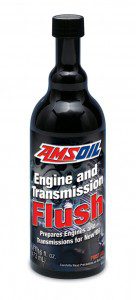OE 0W-16: Light and Strong Now in stock in Sioux Falls. Exit 73 behind Marlins! A 0W-16 viscosity motor oil may seem exotic to North American drivers, but as fuel efficiency requirements increase, it may become a common recommendation of manufacturers worldwide. Japanese engineers have long experimented with ultra-thin motor oils, and 0W-16 has been […]
You are browsing archives for
Tag: motor oil
Why Buy Signature Series? Nothing Comes ...
Why Buy Signature Series? There are many big names out there. A lot of new start-ups claiming to be the Holy Grail in engine oil. But in short, AMSOIL remains on top for one reason – the founder AJ Amatuzio wanted to provide a product where the customer can be certain he (or she) is […]
Engine Flush – Most Overlooked AMSOIL Pr
Product Overview: AMSOIL Engine Flush An Update to Performance One of my top sellers of course is the AMSOIL Engine Flush but when you take a look at the number of oil changes we sell really only about 15% are adding the flush to their order. In reality at least 75% of all the oil […]
Racing Oil vs. Regular Oil: What’s the D
Why not use Racing Oil in my Car If It’s Tougher? John Baker|Nov 29, 2019 8:00 AM When deciding if racing oil is right for their vehicles, gearheads and other enthusiasts sometimes offer this line of reasoning: Racing engines are more severe than my engine Racing engines use racing oil Therefore, I should use racing […]



